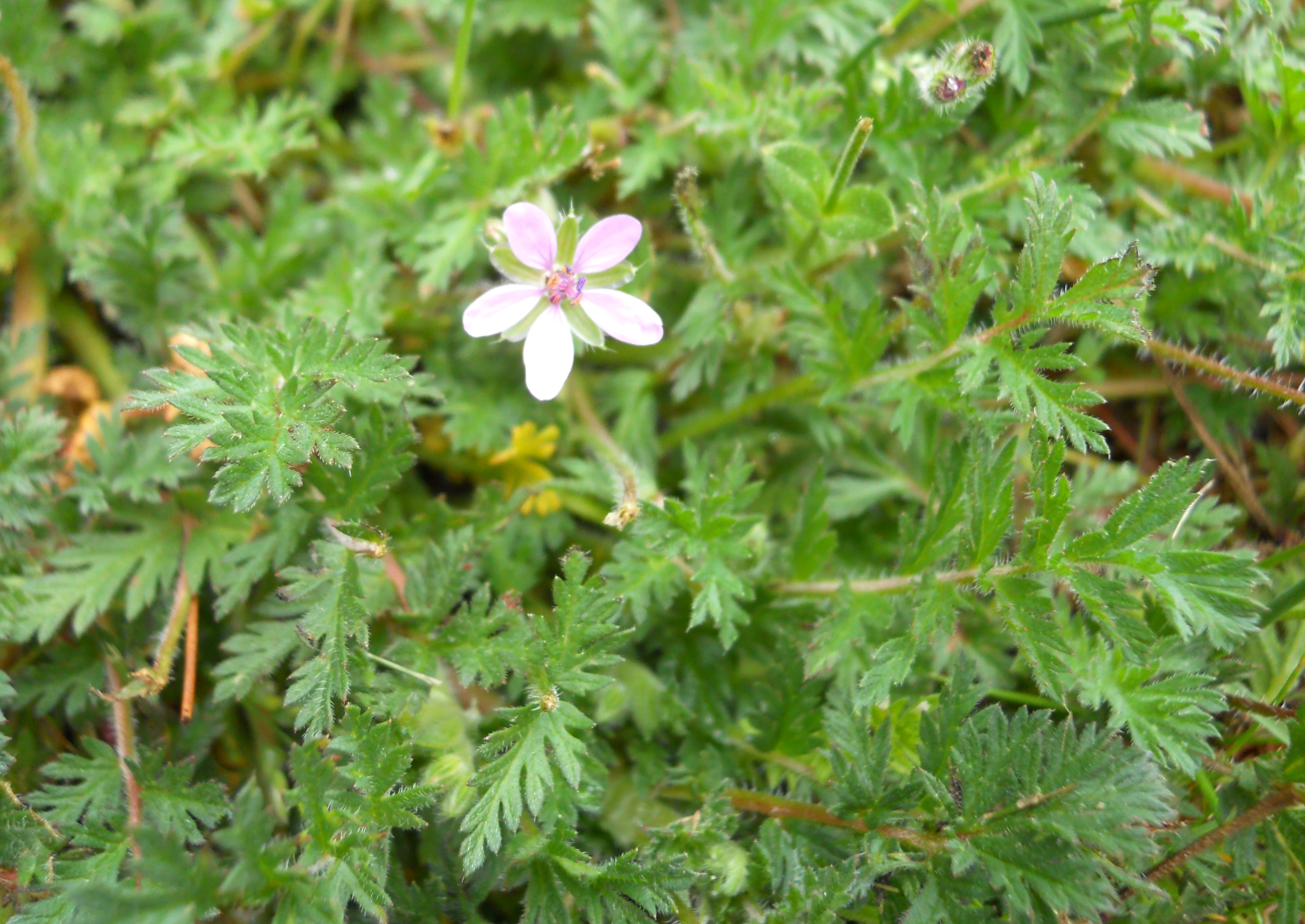
But Can You ID These March-April Flowering Broadleaf Weeds? Peter H. Dernoeden, Ph. D.
We have had mostly a mild winter and early spring, and not too many widespread turf problems. Annual bluegrass seedheads, annual bluegrass weevil, dollar spot and even crabgrass seedlings have been spotted, but several broadleaf weeds (mostly winter annuals) are now in their glory. Each spring we are presented with a “welcome” color from some, mostly non-invasive broadleaf weeds. In general, early flowering broadleaf weeds are most common in roughs and lawns, and pose little trouble. Those that are now flowering include speedwells, red stem filaree and hairy bittercress. You have seen them, but can you identify them?
Slender speedwell: (aka creeping speedwell or creeping veronica) is a perennial that emerges in autumn from overwintering stolons or from seed. Lengthening days and attendant bright sunshine help to warm soils in exposed areas enabling plants to produce large numbers of showy flowers. Most people enjoy the light-blue flowers of slender speedwell as a welcome sign of spring. Leaves are small, rounded to kidney-shaped. Leaf margins are rounded and have toothed notches. Mature plants are low growing and produce stolons (i.e., creeping stems), which can result in the development of dense mats of plants. Light-blue flowers (< 0.25”in diam.) appear in abundance, especially in sunny areas where turf density is poor. Flowers have 4 fused petals and one petal may be white. With the onset of warmer temperatures in early summer leaves senesce and die, but plants survive as stolons and seed.
Corn speedwell: is a winter annual (i.e., emerges from seed in the autumn and dies in summer) and has flowers and leaves similar to slender speedwell. Leaves of corn speedwell are smaller than slender speedwell. Flowers are less showy, blue and very small (1/16-1/8”). Plants have trailing, branched stems that radiate from the base, but stems do not root at nodes. Corn speedwell senesces and dies with the advent of high temperatures in summer, and survives as seed. Corn speedwell is differentiated from slender speedwell based on smaller leaf size and smaller flower diameter.
Red-stem filaree: (aka red-stem stork’s bill) is a biennial (i.e., lives for 2 years), and emerges in early spring from either seed or overwintering rosettes (i.e., circular cluster of leaves). Mature leaves are deeply cut to the mid-vein. Stems develop from rosettes and are hairy and fleshy, and can grow 4 to 6” or longer. Stems grow low to the ground and usually are green close to the base of rosettes, but become reddish as they elongate. In spring, flowers form in clusters on a long (up to 2”), hairy and leafless stalks. Flowers have 5 petals and are pink to purple or lavender. Each flower develops into a long, conspicuous beak-like fruit that mimics a stork’s bill. Flowers and fruit persist for only a short period, but rosettes can remain evident in summer or senesce and die with the advent of high temperature stress. Plants survive as rosettes or as seed.

Hairy bittercress: emerges in autumn from seed (i.e., winter annual) as soils become cooler, but is not conspicuous until early spring when seedheads are produced. Hairy bittercress produces small kidney or heart- shaped leaves. Mature plants produce basal rosettes with deeply lobed leaves. Small, white flowers form in clusters on top of 4 to 12” or taller stems from late winter to mid- spring. Seeds are produced in rows in flattened, narrow or needle-shaped pods (0.25 to 0.5” long). When mature, seed are explosively propelled from pods over a distance of 6 ft. or greater. This is especially notable when mowing, at which time one can see and feel the seeds flying and pinging. Hairy bittercress stems give turf a shaggy appearance, but plants are not invasive in mature and dense turf. With the advent of warm temperatures, plants naturally senesce and die.

 Dr. Pete's Turf Tips
Dr. Pete's Turf Tips


